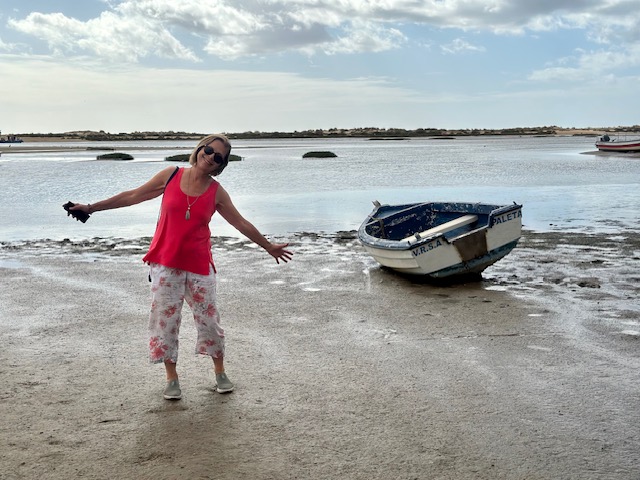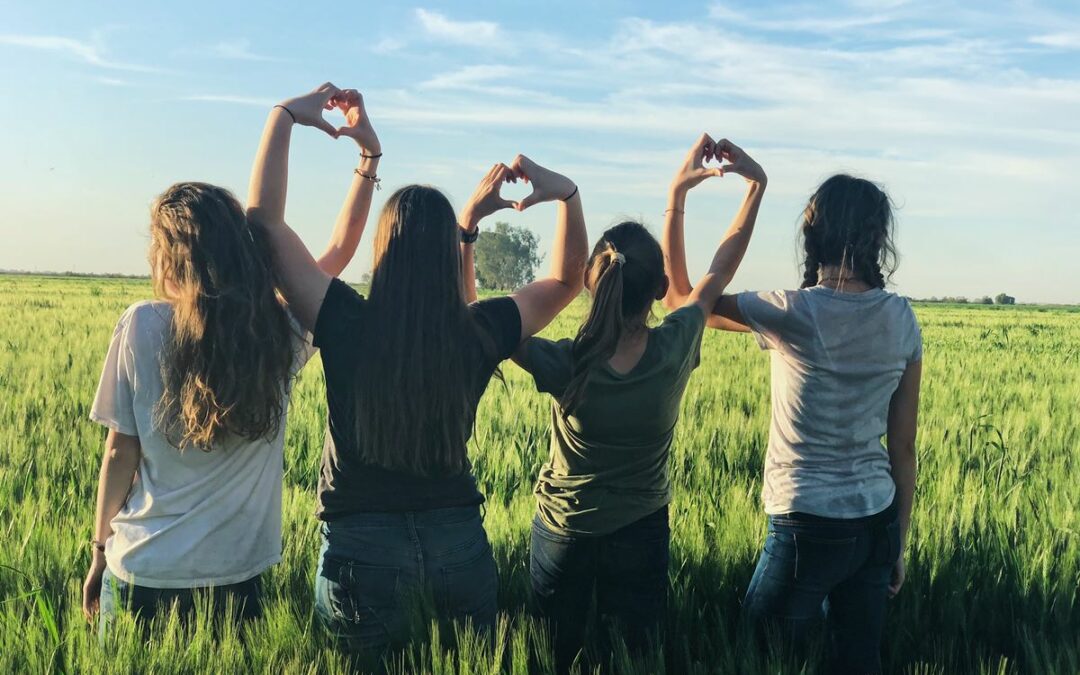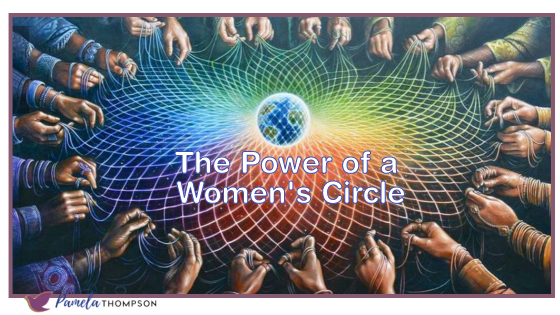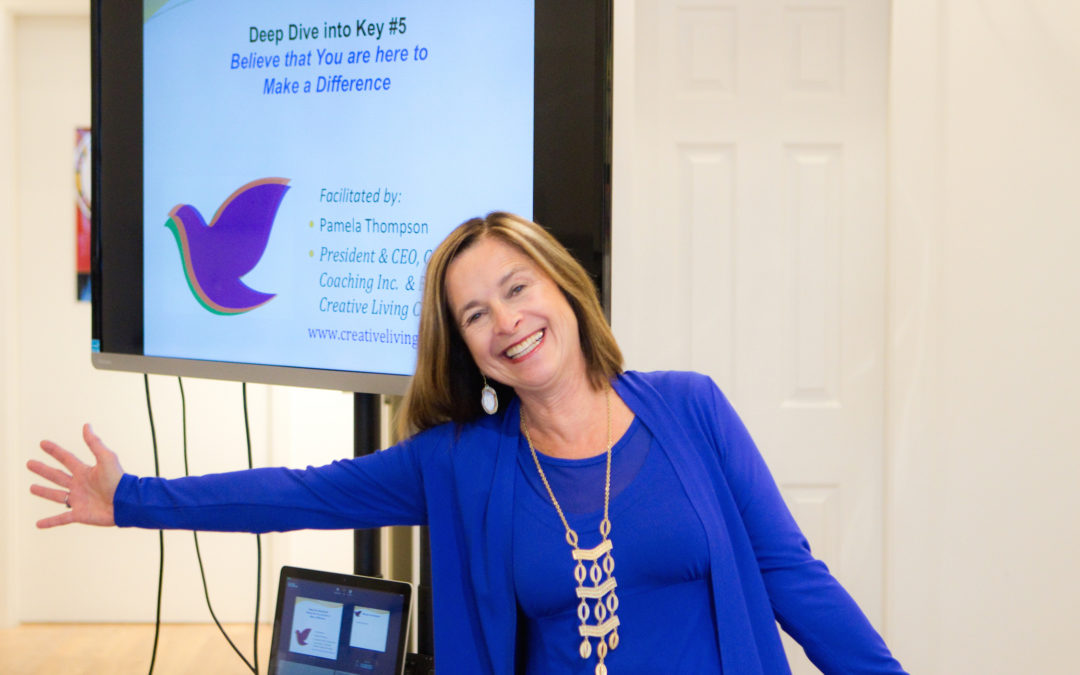
by pam | Nov 6, 2023 | Celebrating, Feminine Leadership, LeadinginUncertainTimes
When was the last time you truly rewarded yourself for a job well done? In my former life of driving and striving, I would complete something on my list, check it off and get on with the next thing. I didn’t take time to celebrate.
Recently I handed over the leadership of a national non-profit I founded about three years ago to two extremely capable women. I feel so blessed that they said yes to taking over the reins. Founding and running a non-profit is similar, to starting up and running a business. You need to generate revenue, identify who you are serving and provide them with products and services that meet their needs. As a leader, it is important to create a team that works well together and inspire them with your vision and mission.
When I founded Female Wave of Change Canada – https://fwoccanada.com on December 7, 2020, it was part of a commitment to the global body Female Wave of Change – https://femalewaveofchange.com to create a legal entity to build the community and grow the movement across Canada. We believe that feminine leadership holds the key to creating a better world; a more conscious, equitable, just, sustainable, and peaceful one. From the outset when Ingun Bol, the founder, invited me to be Ambassador for Canada of Female Wave of Change, I felt the passion and alignment to their philosophy and values. The fact that Ingun did not provide a model of how the community “should” be grown was another thing that attracted me. The opportunity to create something new and inspire others to believe in our mission and vision and truly model the attributes of a feminine leader appealed to me. Such attributes include: authenticity, inclusiveness, collaborative, emotionally intelligent … (explained in more detail here: https://pamela-thompson.com/why-feminine-leadership-holds-the-key-to-creating-a-world-that-works-for-everyone)
In this constantly changing and uncertain world we live in, how many of us take the time to really listen to what our heart and gut are telling us? Perhaps that is one of the benefits of aging. When we are younger, we may set goals and pursue careers based on what others are telling us we’re good at. As we age and hopefully become wiser, we really don’t care much about what others think and gain more clarity about what will truly bring us joy.
I knew more than six months before I mentioned to my Board that I needed to hand over the leadership and that my passion was starting to wane. My heart and gut were telling me that it was important to open up some more space to be creative; to write that next book, to start painting, to be open to other possibilities, whatever they might be. For awhile, I was afraid to announce to the Board my intention. However, when I said in early May of this year that by the end of September, I wanted to hand over the reins, I was extremely clear. I had also considered that if no one came forward that I would have to potentially shut down an organization that I had poured my “heart and soul” into. Having that clarity, I believe assisted me and the Board to decide on a Co-Chair model with two women leaders sharing the responsibility of moving the organization forward with the support of others on the Board. It is also a beautiful way to model collaboration, one of the attributes of a feminine leader.
I’m proud to say that we have a strong committed Board and a core of paid members who attend our monthly virtual gatherings with featured guests on a regular basis. We have also co-created a “Mother Earth Ambassador Program”; an experiential outdoor education program for girls ages 9 to 12 that teaches them about Mother Earth, the Mother Tree, and how to become Mother Earth Ambassadors in their homes, schools and communities. More details here: https://pamela-thompson.com/how-mother-nature-the-mother-tree-and-feminine-leadership-intersect-a-unique-program-empowering-leaders-of-the-future/. The first cohort of the program is happening in Metchosin, BC on Vancouver Island and is scheduled to finish in early December. We are currently seeking partners to implement this program across Canada and beyond. Feel free to reach out if you and your organization is interested in that possibility by emailing me directly at pamela@femalewaveofchange.com.
If interested in learning more about Female Wave of Change Canada I invite you to explore our website: https://fwoccanada.com and register to attend one of our virtual monthly gatherings that typically happen the third Wednesday of every month from 4:30 to 6 pm Pacific/7:30 to 9 pm Eastern.
So, how did I reward myself? I planned a three-week vacation in Portugal and invited a dear friend to join me. We had a blast! How will you reward yourself and celebrate your next achievement?
I welcome your thoughts and comments below.

by pam | Jun 13, 2023 | Benefits of being in nature, Collaboration, Feminine Leadership, Health & Wellbeing
It was about six weeks into the pandemic; a scary and uncertain time. Then came the news of air pollution levels over China drastically decreasing and dolphins returning to swim in the canals of Venice! Two powerful indicators of nature showing us how she can heal herself and ways we can contribute to healing the planet.
I’ve been interested in nature since a child and feel blessed to now live 10 minutes’ walk from the ocean and about 10 minutes from a beautiful park. That said I’ve never studied much about the environment, sustainability, or regenerative agriculture until recently. These powerful examples from nature encouraged me to want to learn more and find out how I could contribute to improving the health of the planet.
I run a national, member-based non-profit Female Wave of Change Canada. We are part of a global social movement, Female Wave of Change , now in over 40 countries around the globe. We believe feminine leadership holds the key to creating a better world; a more conscious, equitable, just, sustainable, and peaceful one. We work in five pillar areas: education, environment, economy, health, and humanity. Inspired by these two powerful examples from nature, I put a call out to members in late June of 2021 to invite them to be part of a team to co-create a project related to the environment. The caveat was they needed to have an interest in and/or be passionate about the environment. They didn’t need to be a subject matter expert and if they were that was a bonus. Five members responded to the “call”, one being a subject matter expert. In less than six months via zoom, we co-created the Mother Earth Ambassador Program[1], an experiential, outdoor education program to teach girls ages 9 to 12 about Mother Earth, the Mother Tree, and how to become Ambassadors for Mother Earth in their homes, schools, and communities.
We reviewed a number of articles and books, as well as videos and programs on nature, the environment, and sustainability and decided to focus on the forest. We were strongly influenced by the work of Suzanne Simard, a forest ecologist at the University of British Columbia and her research on the Mother Tree. She discovered that there are hub trees in the forest and called them Mother Trees as they display many characteristics of nurturing mothers such as when a tree is experiencing unhealthy conditions such as insufficient nutrients, the Mother Tree communicates through the mycorrhizal fungi in the soil to other trees to support young and unhealthy trees even if they are of another species. The Mother Tree exhibits qualities of feminine leadership our organization promotes such as inclusiveness, collaboration, and creativity to name a few.
Girls aged 9 to 12 are the leaders of the future and teaching them about the Mother Tree, Mother Nature and how to become Ambassadors strengthens their confidence to make wise choices during a pivotal time in their lives. During the program, each girl develops a personalized action plan to create positive change for the earth in her home, school and/or community.
We are currently accepting applications for a cohort of eight girls starting in Metchosin on Vancouver Island on September 23 running for eight Saturdays until November 18. The program is being facilitated by Sarah Wade a certified elementary and middle school teacher with much experience teaching outdoor education including living and working with indigenous elders and youth in Nunavut.
We have a big vision for the program. We plan to develop partnerships with organizations who serve girls ages 9 to 12 to deliver the program across Canada and beyond. To support this vision, we need funds to create a train-the-trainer program that will augment the detailed facilitator’s guide and overall program design we developed with the support of a gifted curriculum development consultant Tiana Fech.
If this program “strikes a chord” with you, there are three ways you may support it:
- Share the program details with families you know with girls aged 9 to 12 who live in the Greater Victoria, BC area who you think might be a good fit, and encourage them to consider applying – https://fwoccanada.com/mother-earth-ambassador-program/
- Donate or become a sponsor for the program (Note that we receive no funds from the parent organization and all of our programs and initiatives are supported by memberships, donations, and sponsors) – https://fwoccanada.com/donate/
- Contact info@fwoccanada.com if you are aware of or belong to an organization who would be interested in learning more about delivering this program in your/their community.
[1] I would like to acknowledge Dave Best, CEO, Vanilla Blossom (sponsor), Tiana Fech, those members of FWOCC who donated to the initiative and the 5 members of the team who “birthed” the Mother Earth Ambassador Program with me: Rita Fromholt, Laureen Card, Donna Fairhurst, Charmaine Hammond, and Carolyn Pisani.

by pam | Oct 1, 2022 | Coping with Change, Feminine Leadership, Health & Wellbeing, Self-Care
About four years ago a friend told me about a weekend training which was the “way in” to being part of a new Women’s Circle that was forming locally. Being curious and relatively new to the area, I thought this might be a way to make new women friends. I eagerly signed up and on entering the room felt welcome and in the company of like-minded women. The facilitator began the workshop by creating a safe space for us all; one of confidentiality and respect.
At the end of the weekend, we were asked if we wanted for form a new Circle and I jumped in without hesitation. Little did I know the journey I was about to embark on!
After being part of a Women’s Circle I am a changed person. I now am more in touch with my feelings and have learned to trust my intuition and share my thoughts with others in the Circle and beyond. I have experienced each woman growing, stepping into who she is, and creating the life she desires from the inside-out. We have supported several women through separation and divorce, one has retired, and another is contemplating retirement. Women have tapped into their creativity. One is composing music and has started playing regularly at a spiritual center. Another is drawing beautiful mandalas and has recently been asked what price she would ask for them. We now plan social events from time to time to share playful and fun times together. I look forward to our bi-weekly meetings and being in a circle of women who truly love and respect me; women who I know will always share their truths and perspectives if I ask.
Jean Shinoda Bolen in her book The Millionth Circle – How to Change Ourselves and The World, beautifully articulates the power of a Women’s Circle and how to create and maintain one. Dr. Bolen “provides tools and inspiration for women to create new circles or deepen and transform existing circles into vehicles of societal and psychospiritual change.”
Based on my own experience I decided the context for my new book The Exploits of Minerva would be a Woman’s Circle with six women who have been supporting one another in a Circle for more than two decades through a variety of life transitions. Stay tuned for the launch coming soon!
I encourage you to check out Dr. Bolen’s book and google Women’s Circles if you’re interested in learning more. If you have experienced the power of a Women’s Circle, I invite you to share your thoughts in the comments below.

by pam | Sep 19, 2021 | Conscious Living, Creative Living, Feminine Leadership, Leadership, Women in Business
It’s interesting when I reflect on how I used to act and feel in the workplace. I learned from a young age that it was important to separate my work life from my personal life. In doing so I could protect myself, and in the workplace I would only share the parts of myself that I felt were valued. For example, my ability to write, to facilitate, to work collaboratively with others.
I recall when launching my coaching business in 2009, after 10.5 years of doing management consulting, how I felt like I could only share my new business with certain clients. Others I thought would think I was going “woo woo”. After researching and writing program and policy documents in the health field, designing and facilitating multistakeholder and consultative processes, and doing qualitative studies, I launched the Creative Healing Center, a virtual center, where we coached people through various life transitions and integrated this with creativity, eastern psychology, the health-promoting and healing benefits of the arts, and alternative modalities. At that time, I felt like I was trying to balance on two Swiss balls and was being challenged to do so. I felt that my logical left brain that I had been operating from for so long, (or so I thought), was now being challenged by my creative and empathic right brain.
Recently in chatting with a Diversity and Inclusion consultant, biracial friend and colleague, she spoke about “code-switching”[1] and how women of color typically show up differently at work compared to with friends and at home. They do this because they feel and understand, based on experience, that if they bring their whole selves to work, they will not be valued, respected or promoted.
It made me reflect on which environments I felt most comfortable bringing my whole self to work in. Curiously it was in cross-cultural situations where I was working internationally with teams from countries such as Pakistan, Colombia, Nigeria, and Afghanistan; with people from cultures other than my own, that I brought my whole self to work. Curious isn’t it? Perhaps I had internalized from a young age that it was better to only share parts of myself in the North American work environment; and not to acknowledge my intuition and creativity?
How about you? Do you bring your whole self to work? What environments facilitate that? Which ones prevent you from sharing your whole self and why? I welcome your thoughts and comments below.
[1] https://www.psychologytoday.com/us/blog/achieving-health-equity/202012/what-is-code-switching

by pam | Jul 26, 2021 | Collaboration, Feminine Leadership, Leadership, Women in Business
Recently, I was in an interactive workshop of female leaders, and a number of women voiced that they had negative feelings around the word “power”. I must confess, that was my belief for a number of years, based on my experience with leaders and leadership. However, recently I have changed my perspective around power after being energized and impressed at the way so many of the female leaders around the world responded to the pandemic. They were confident, decisive, and worked collaboratively with their teams and even consulted female leaders in other countries regarding their policies, practices and lessons learned.
The time has come for us to change our mindsets from “power over” to “power with”. Examples of “power with” include how Jacinda Ardern during the pandemic broadcast nationally to her fellow New Zealanders in her sweatshirt coming from a place of empathy and understanding, rather than command and control. How scientists from around the world banded together to find a vaccine for COVID-19 in record time, also demonstrated “power with”.
When you think of “power with”, what images does it conjure up? What does it mean to you? I see men and women standing together in a circle holding hands. I see community. To me it means admitting I don’t have all the answers and working together with others to solve complex issues and generate creative solutions. When I think of “power over” I think of a man on his own at the top of a hierarchy, making the decisions on his own from a place of ego, without seeing the need to consult with and understand various perspectives.
“Power over” is when one person or group unilaterally, usually through their political and/or financial influence, imposes their views and ways of working on others for their own gain, rather than trying to understand others and see the world through a different lens. They are threatened by new ideas and perspectives and often want to maintain the status quo that keeps them in power. They also encourage and support competition over collaboration.
The days of the Lone Wolf are over. Complex issues such climate change and systemic racism require leaders from a variety of backgrounds, disciplines, sectors and countries to solve them.
I believe that “power with”, which involves collaboration, is the way forward.
In order to collaborate it is important to:
- Believe that more than one “head” is better than one; that multiple perspectives around an issue lead to more creative and sustainable solutions
- Trust those you are collaborating with
- Be clear on your role and that of others in the process
- Have values aligned with those you are collaborating with
- Be open to new ways of understanding and looking at a problem
- Come from a place of service; of making a positive difference in the world.
What does power look and feel like for you? I welcome your thoughts and comments below on “power over” and “power with”.

by pam | May 24, 2021 | Feminine Leadership, Leadership
Have you ever hired someone who looked great on paper, had excellent references, prestigious credentials and yet in an interview your gut told you there was something missing? Yet, you hired that person and didn’t listen to what your body was telling you. Within several months you realized you had not made a good choice, as the new hire ended up being highly competitive and out of alignment with one of your organization’s core values of collaboration.
It happens all the time. Why do we value our rational, logical left brain over our intuitive body’s wisdom? It turns out our organizations have been built on a set of beliefs that value the rational, logical left brain over our intuitive and creative right brain. We are beginning to realize the value of our intuition and the fact that leadership is both an art and a science.
In a recent leadership development class on authentic feminine leadership I taught with women leaders from a variety of countries[1], we walked through a number of qualities of authentic feminine leaders including: creativity, collaboration, inclusiveness, and intuition (discussed in more detail here – https://pamela-thompson.com/why-feminine-leadership-holds-the-key-to-creating-a-world-that-works-for-everyone/). I then asked each student to rate themselves on a scale from one to ten related to how well they embraced each of the qualities we had shared. After that, I invited them to revisit their ratings, identify the one most challenging for them related to their leadership, reflect on why, and share their reflections. It turned out intuition was the quality they were most challenged to embrace.
How can we learn to listen to and trust in our body’s wisdom and use it to make better decisions in our work and personal life?
Here are a few tools I use myself and have taught to clients from a variety of countries and cultures to help them get out of their heads and into their bodies.
- Body Scanning – This is an excellent tool to use to become more aware of your body and the messages it sends you. It’s helpful to do this first thing in the morning before you get out of bed or at night before you retire.
Close your eyes and take several deep breaths in through your nose and out through your mouth. Then begin scanning your body from the top of your head to the tips of your toes. Notice any areas of tightness or discomfort. Breathe into those areas and imagine releasing the tightness or discomfort.
- Mindfulness Walking Meditation – Many of us who are busy and driven are challenged to sit down and meditate. If that is you, mindfulness walking meditation may be “just what the doctor ordered”. It’s preferable to do this outside in nature.
As you walk, focus on all of your senses. Feel the cool breeze against your face, smell the salt from the sea, hear the chirping of the birds, see the beautiful vistas or forest you are walking in. When thoughts come in, as they will, imagine they are clouds floating by and let then go or put them in a bubble and watch them float away. I encourage you to do this 3 times a week to start, for 20 to 30 minutes each time. Notice how you feel after each walk and the cumulative effect.
If you wish to learn more about how to “listen to and trust in your body’s wisdom”, I encourage you to read chapter 4 in my book Learning to Dance with Life: A Guide for High Achieving Women. Note that men as well as women have found this book helpful.
I welcome your comments below, in particular on strategies you have found useful to help you to make wise decisions by tapping into your body’s wisdom.
[1] As faculty for Women Leading in Change https://femalewaveofchange.com/reshape-the-future/ – a virtual leadership development program of Female Wave of Change.





